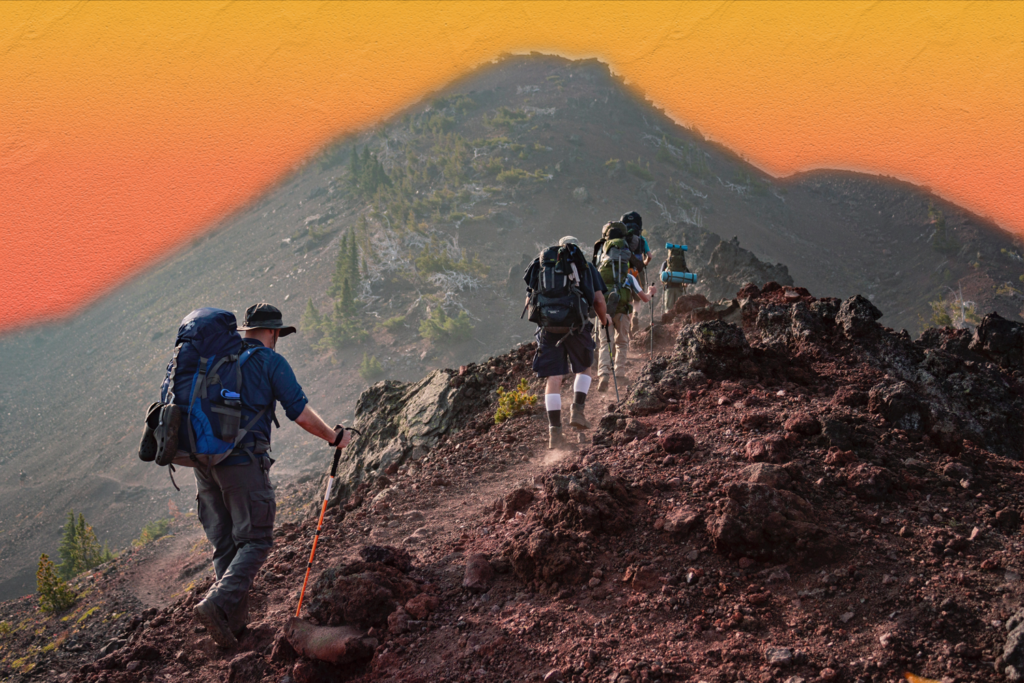In all seriousness, go touch grass: How getting outside can help you in more ways than one

As someone that spends way too much time indoors staring at a screen, whether it’s writing articles for the paper or essays for school, I’ve been feeling a distinct lack of vitamin D. I think a doctor would be well within their rights to diagnose me as being “chronically online.” To counteract this, I’ve been borrowing my neighbor’s new puppy and taking her out for walks at the local nature conservancy down the street. I don’t listen to music, I don’t listen to a podcast, it’s just me out in the world. I walk her three times a week for at least 45 minutes and I’ve honestly never felt better. Besides spending some one-on-one time with a rambunctious puppy, the fresh air has me more revitalized and energized than ever. With such beautiful weather in the Atlanta area for the past week, I’ve been trying to sneak in extra time outside and I think you should, too.
The COVID pandemic has pushed a lot of us inside, for good reason, but it’s more important than ever to start getting out in nature again. According to a 2019 survey by American Public Media Research Lab, about one in six Americans never spend any free time in nature. Some of the most common reasons why people aren’t getting outside more are work, lack of time and other obligations. In fact, as of 2001, Americans spend 92.4% of their days inside. Mind you, this is before the internet boom and global pandemic that sent everyone to the safety of the indoors.
The idea of being inside an office building my whole life is bad enough and that’s without considering all of the benefits of getting into the great outdoors. Being outside reduces a person’s stress, cortisol levels, muscle tension and heart rate, all of which are contributing risk factors to cardiovascular disease. Spending a considerable amount of time outside can decrease the risk of depression and increase the attention and focus of an individual. Furthermore, green spaces can build up a community by reducing environmental stressors like air pollution, noise and heat while serving as a gathering place for people to spend quality time with one another.
Accessibility is one of the first questions people must face when it comes to getting some time outside, just know there is hope. The National Parks Service Rivers, Trails and Conservation Assistance Program ( NPS-RTCA) has been a major proponent in the development of locally-led conservation and outdoor recreation projects across the United States, which assists communities in creating or restoring parks, conservation areas, rivers and wildlife habitats as well as creating outdoor recreation opportunities and programs that engage future generations in the outdoors. Through an annual application process, community groups, nonprofit organizations, tribal governments, national parks and local, state and federal agencies can apply for NPS-RTCA technical assistance. The NPS-RTCA was actually responsible for the success of Georgia’s new Firefly Rail-Trail, a 39-mile rail-trail extending from Athens to Union Point.
In the meantime, there are plenty of places to get some fresh air, even in urban environments like Atlanta. Apps like Gaia GPS and AllTrails utilize GPS technology to allow users to search for walking or hiking trails in their area. I’ve been using AllTrails for the past three years and it’s taken me through adventures from the Shenandoah Valley to the Swiss Alps with ease. I particularly like that it has filters to sort routes by activity, accessibility (stroller-friendly or wheelchair friendly included) and difficulty. It took me to Stone Mountain three weeks ago to grind out the 9-mile hike to the top and back, but it also showed me a little shaded loop a few neighborhoods over.
Bottom line is that we all need to be getting outside more and we can use our tech for a little help when needed. I hope to see you all out on the trails and don’t forget to log your next walkabout in AllTrails when you’re done!


























